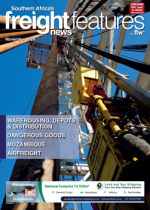Cornelder de Moçambique is seeing significant growth in cargo volumes and operational efficiency, according to Jan de Vries, executive managing director of the company. Speaking to Freight News, De Vries highlighted the surge in container and general cargo volumes as the Port of Beira continued to implement several strategic improvements to handle the increasing demand.“Volumes are way up,” said De Vries, noting that container cargo volumes for August had increased 34% year-on-year, following a 20% growth last year. “General cargo terminal volumes are up by 22%. We are extremely busy, all while performing construction works and adapting to various market factors.”While he attributed part of the growth to a rebound effect from the container crisis of 2022, he said the increase in shipping lines calling at the Port of Beira was also driving up volumes. “After challenging years from 2020 to 2022 where Covid-19 and its after effects on the supply chain affected us, we have seen a strong recovery. We now have seven shipping lines calling at the Port of Beira directly. This increased diversity of shipping options has made Beira far more attractive.”He said Zimbabwe continued to be a significant growth market, particularly in the mining sector, with industries related to lithium, chrome and ferrochrome driving increased business. “While the country continues to have some challenges, particularly with forex restrictions, we are seeing that shippers are finding ways to manage,” he said. Other minerals, including vermiculite, cobalt and copper, are also moving through the port, with both Zambia and the Democratic Republic of Congo (DRC) continuing to use Beira for exports and imports.“Transit cargo is up by 50% this year, and while Mozambican traffic represents about 20% of overall volumes, the Port of Beira has managed to attract more cargo, particularly from neighbouring countries,” said De Vries.To keep up with the rising demand, Cornelder de Moçambique is constantly working to increase its capacity. "We recently completed the removal of old warehouses to make space for additional container yards. We are continually increasing the footprint of the container terminal,” said De Vries. “We’re also introducing new systems to optimise inf low and outf low, including our next-generation gate operating system. This involves handheld devices with AI that recognise driver licences, licence plates and container numbers and reduce the time it takes to register trucks entering and exiting the terminal. This reduces the processing time for each truck and thus increases capacity.”Enhancing terminal flowIn addition to improved systems, the company is increasing the number of lanes used for truck movements to enhance terminal f low and alleviate congestion. “We are coordinating with traffic authorities and the municipality to improve circulation around the port, which can significantly reduce road congestion,” said De Vries. Looking ahead, Cornelder de Moçambique plans to tender for larger cranes by the end of the year. They will be post-Panamax cranes capable of handling vessels up to 10 000 TEUs. "We are expecting to handle close to 400 000 TEUs this year. This comes on the back of ongoing investment into our capacity. Our goal is to increase this to at least 700 000 TEUs going forward.”New terminal operating systemAccording to De Vries, it is not just equipment and physical port capacity that is important, but technological advancements continue to play a crucial role in the port’s efficiency. “Last year, we introduced a new terminal operating system for general cargo, which links the gate, weighbridges, warehouses and truck queues. This has helped us identify bottlenecks and optimise processes,” he said, citing multiple records in clinker discharge, chrome loading and granite loading as a result of the new systems.De Vries acknowledged that challenges remained, particularly with access in and out of the port and across the corridor, as border infrastructure struggled to keep pace with increasing volumes. “While steps are being taken to improve f luidity, including the implementation of e-seals for cargo security, we still face issues with cargo f low at borders, which impacts everyone.”He said the Beira Corridor, however, continued to go from strength to strength. A major infrastructure project in the pipeline is set to boost the outlook for the port and corridor further. “We are looking at a dedicated road to the port, for which land has already been reserved. We need this project to move forward to ensure we don’t reach a point where cargo is accumulating at the port,” said De Vries. LV

